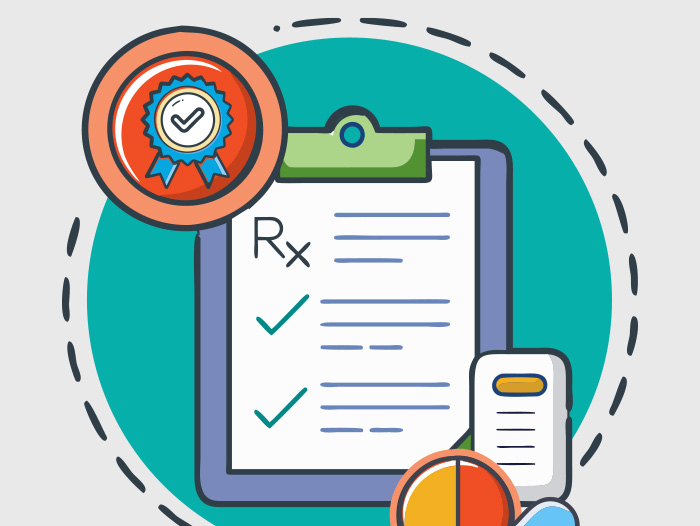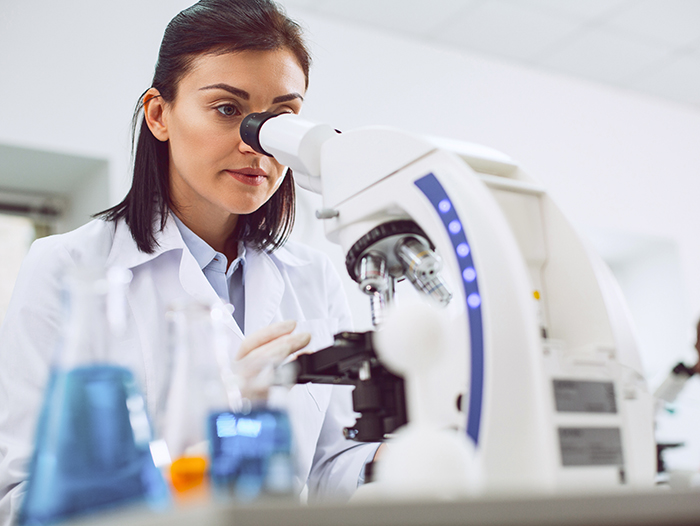Auto logout in seconds.
Continue LogoutAlthough cancer remains most common among older adults, cancer rates have recently begun to grow significantly among younger adults — leading to concerns from health experts. Writing for the Washington Post, Ariana Eunjung Cha, Álvaro Valiño, and Dan Keating describe the startling increase in cancer cases among millennials and outline four potential environmental factors that could explain this recent rise.
Cancer cases are rising among younger adults
Although cancer is still around 20 times more common among older adults than younger ones, there has been a growing trend of new cancer diagnoses among people under the age of 50.
For example, rates of colorectal cancer among people under 50 have increased by around 2% a year since the 1990s. Similarly, breast cancer rates among women under 50 have begun to increase in recent years, growing by 2% a year between 2015 and 2019.
According to the Washington Post, this trend of rising cancer rates among younger adults began with younger members of Generation X. But now, it's most apparent among millennials, who are being diagnosed in their early 40s or even younger.
In an examination of federal data, the Post found that cancer rates among people ages 15 to 49 have increased by 10% since 2000, even though rates have declined among older adults. Young women are more affected by this trend than men, with women ages 15 to 49 having an 83% higher cancer rate than men in the same age range.
Similarly, findings from a 150,000-person study released last year at the annual American Association for Cancer Research meeting found that millennials seemed to be aging biologically faster than older generations. This acceleration was associated with a significantly increased risk (up to 42%) for certain types of cancers, particularly those of the lung, gastrointestinal tract, and uterus.
What's driving this increase in cases?
As cases of early-onset cancers continue to rise, a growing number of scientists are examining how the "exposome" — or the total range of environmental exposures a person experiences throughout their life, even before birth — can impact a person's biology and risk of certain diseases.
"We've changed what we're exposed to considerably in the past few decades," said Gary Patti, a professor of chemistry, genetics and medicine at the Washington University School of Medicine in St. Louis. According to researchers, changes in everyday exposures may be accelerating aging, which makes the body more susceptible to disease earlier than expected.
Although research in this area is still in the early stages, scientists have pinpointed several potential harmful environmental exposures, including:
Maternal medicines
During the second half of the 20th century, "[a]ntidepressants, anti-nausea medications, antibiotics, hormone treatments — even in combinations, sometimes all in one trimester — heralded a new normal of active pregnancy management," the authors write.
Although these developments were seen as progress at the time, researchers have found that the reality was more complicated, especially since the negative health impacts of certain medications have only been discovered years later.
While analyzing epidemiological data, Caitlin Murphy, a professor and cancer epidemiologist at the University of Chicago, discovered that cancer rates appeared to spike among millennials rather than just increasing with age.
Using data from one of the longest-running U.S. maternal health studies and statewide cancer registries, Murphy found that children whose mothers had taken the anti-nausea drug Bendectin during pregnancy were 3.6 times more likely to develop colon cancer as adults. Similarly, children of mothers who received hydroxyprogesterone caproate to prevent miscarriage had over double the overall lifetime cancer risk. In this group, around 65% of cancers occurred before 50 years of age.
"Chemical and plastic exposure today is diffuse, ambient and inescapable, unlike legacy toxins such as asbestos or lead, which tended to be more occupational or localized."
According to the Post, Bendectin was voluntarily withdrawn from the market in 1983 due to concerns of birth defects, though follow-up testing found no link. FDA also withdrew its approval for brand name and generic hydroxyprogesterone caproate in 2023 after a large clinical trial failed to show the drug was effective.
Diet
Currently, ultra-processed foods (UPFs) make up over half of the total daily calorie intake in many countries, including the United States. Primarily designed for flavor, convenience, and shelf stability, UPFs have been associated with growing rates of obesity and metabolic disease.
Recent research suggests that UPFs may also be linked to an increase in cancer among younger adults. For example, a 2023 study published in The BMJ found that heavy consumption of UPFs was associated with significantly higher risks of certain cancers, including colorectal and breast cancer. Colorectal and breast cancer are the fastest growing types of cancer in people under the age of 50.
Early findings from a global research initiative launched in 2024 also found that individuals under 50 who consumed the largest amounts of UPFs had a 1.5-fold increased risk of early-onset colon tumors.
Andrew Chan, a gastroenterologist at Massachusetts General Hospital and professor of medicine at Harvard Medical School who co-leads the initiative, noted that association isn't just due to weight gain. "Ultra-processed foods appear to have independent metabolic effects that could have negative consequences on human health," he said.
Currently, researchers are investigating potential ways UPFs could cause cancer, including additives leading to chronic inflammation, emulsifiers disrupting gut microbiota, and high-heat cooking resulting in carcinogenic compounds.
Advisory Board's ONCOLOGY resources
- 4 major trends shaping today's oncology market
- Cancer screening program resource library
- Cancer mortality is down, but cases are rising among young adults
- Could a simple blood test improve colon cancer detection?
- 4 predictions about the future of cancer care
- When should you start colon cancer screenings?
Circadian rhythm
The circadian system, or our internal clock, syncs the body to a 24-hour cycle of light and dark based on Earth's rotation and helps regulate everything from cell repair to hormone release.
However, artificial light, unpredictable work schedules, and 24/7 digital connectivity have fundamentally changed how people sleep, rest, and eat. Melatonin, a hormone produced in darkness, is essential to regulating our circadian system, but these changes mean that melatonin production is regularly disrupted. Because of this, biological processes that rely on circadian rhythms, such as immune regulations and endocrine control, may not function as they should.
"Our bodies need those dark periods for many aspects of homeostasis," said Selma Masri, an associate professor of biological chemistry at the University of California, Irvine School of Medicine.
Currently, research has found that chronic circadian misalignment is linked to increased risks of breast, colorectal, lung, liver, and pancreatic cancers — all of which are increasingly being diagnosed in younger populations. The International Agency for Research on Cancer has also identified shift work that disrupts circadian rhythms as a probable human carcinogen.
Chemicals and microplastics
"Chemical and plastic exposure today is diffuse, ambient and inescapable, unlike legacy toxins such as asbestos or lead, which tended to be more occupational or localized," the authors write. Microplastics, which can contain several environmental toxins, have been found in the placenta, lungs, and even the heart and brain.
According to laboratory studies, microplastics can damage DNA, disrupt cell division, and cause chronic inflammation — a well-known driver of carcinogenesis. An analysis of peer-reviewed studies published in 2024 also found evidence linking microplastic exposure to mechanisms indicative of cancer in both the digestive and respiratory system.
Currently, there are over 100,000 synthetic chemicals on the market, but only a small fraction has been studied for potential links to cancer. Among the few that have been examined, many have been shown to have some links to cancer. For example, a 2024 study published in Environmental Health Perspectives identified 921 chemicals that could increase the risk of breast cancer.
Ultimately, researchers say that the rise in cancer cases among younger adults reflects a deeper trend in human health. Several other major diseases, including heart disease and Alzheimer's, are not just being detected earlier, but are also starting earlier in life.
"This is not just about cancer," said Yin Cao, an associate professor of surgery at the Washington University School of Medicine in St. Louis. "This is a universal problem across different diseases.”
(Cha, et al., Washington Post, 9/23)
Don't miss out on the latest Advisory Board insights
Create your free account to access 1 resource, including the latest research and webinars.
Want access without creating an account?
You have 1 free members-only resource remaining this month.
1 free members-only resources remaining
1 free members-only resources remaining
You've reached your limit of free insights
Become a member to access all of Advisory Board's resources, events, and experts
Never miss out on the latest innovative health care content tailored to you.
Benefits include:
You've reached your limit of free insights
Become a member to access all of Advisory Board's resources, events, and experts
Never miss out on the latest innovative health care content tailored to you.
Benefits include:
This content is available through your Curated Research partnership with Advisory Board. Click on ‘view this resource’ to read the full piece
Email ask@advisory.com to learn more
Click on ‘Become a Member’ to learn about the benefits of a Full-Access partnership with Advisory Board
Never miss out on the latest innovative health care content tailored to you.
Benefits Include:
This is for members only. Learn more.
Click on ‘Become a Member’ to learn about the benefits of a Full-Access partnership with Advisory Board
Never miss out on the latest innovative health care content tailored to you.



